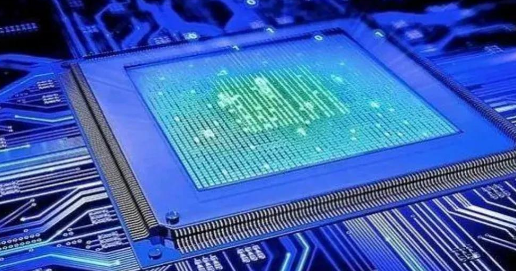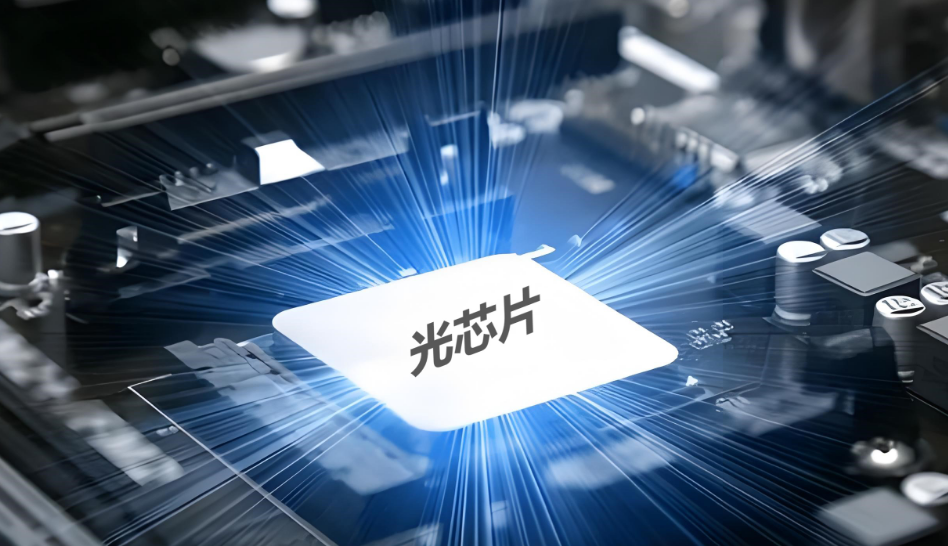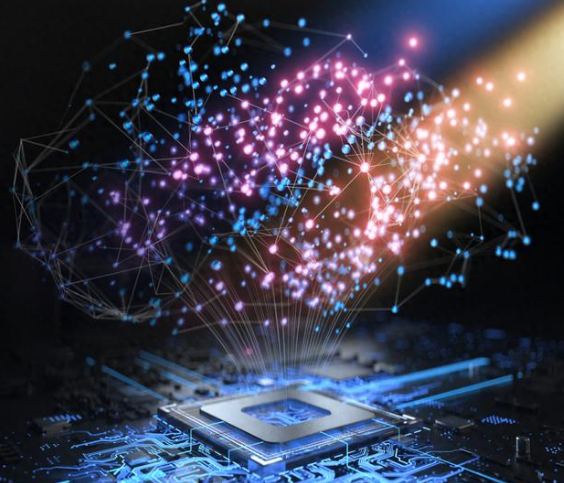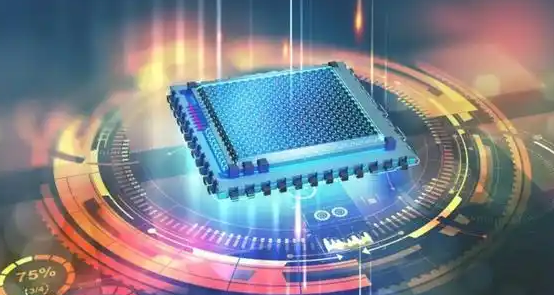Recently, there has been big news in the tech world: a team from China has developed a “super-level” chip that has made it to the cover of the world-renowned scientific journal Nature!It allows not only electrons to run inside the chip but also—light! Yes, light! The speed of light! This operation has propelled the chip’s computing speed to new heights, potentially rewriting the future landscape of technology! Today, let’s dive deep into this “Chinese chip”—PACE—that has even foreigners giving a thumbs up!Current chips are filled with electrons running back and forth, processing various information. However, with too many electrons, it can lead to “traffic jams” (transmission bottlenecks) and can also cause “overheating” (high power consumption). As chips get smaller, improving performance becomes increasingly difficult, leaving scientists pulling their hair out.“Since light travels so fast and doesn’t generate much heat, can we use light to do the work?”Using light solely for computation is challenging; it behaves like a runaway horse, prone to errors. Moreover, how to fit thousands of optical components smaller than dust into a tiny chip while ensuring they coexist peacefully with electronic components is a hellish challenge!The team from Xizhi Technology in China spent eight years tackling this tough problem!They came up with a brilliant idea—”optoelectronic hybrid”! They developed a technology akin to “building with Legos,” stacking the chip responsible for optical computation and the chip responsible for electronic control layer by layer (3D stacking), connecting them with countless tiny “overpasses” in between.
Today, let’s dive deep into this “Chinese chip”—PACE—that has even foreigners giving a thumbs up!Current chips are filled with electrons running back and forth, processing various information. However, with too many electrons, it can lead to “traffic jams” (transmission bottlenecks) and can also cause “overheating” (high power consumption). As chips get smaller, improving performance becomes increasingly difficult, leaving scientists pulling their hair out.“Since light travels so fast and doesn’t generate much heat, can we use light to do the work?”Using light solely for computation is challenging; it behaves like a runaway horse, prone to errors. Moreover, how to fit thousands of optical components smaller than dust into a tiny chip while ensuring they coexist peacefully with electronic components is a hellish challenge!The team from Xizhi Technology in China spent eight years tackling this tough problem!They came up with a brilliant idea—”optoelectronic hybrid”! They developed a technology akin to “building with Legos,” stacking the chip responsible for optical computation and the chip responsible for electronic control layer by layer (3D stacking), connecting them with countless tiny “overpasses” in between. Light takes advantage of its “lightning-fast” speed, charging into battle for computations; while the electronic components steadily “hit the brakes” and “steer the wheel,” precisely controlling the overall process. As one of the R&D leaders put it, “Let light and electrons each do what they do best!”This chip, called PACE, has crammed in over 16,000 tiny optical components! It’s a “super engineering” feat in the microscopic world!Completing a super complex calculation takes only 3 nanoseconds! That’s one billionth of a second! In the time it takes to blink, it may have calculated millions of times! This speed leaves the current top GPUs in the dust by hundreds of times! Hundreds of times, my friends!Not only is it fast, but it also consumes less power! Its energy consumption is significantly lower than that of traditional high-performance chips, making it both fast and energy-efficient—who wouldn’t love that?As AI becomes increasingly intelligent, training them requires immense computing power. With PACE, training time could be reduced from several days to just a few hours or even less!Previously, simulating a drug molecule structure with a supercomputer took several hours; now it could be done in the blink of an eye! It is said that some pharmaceutical companies have used it to cut the new drug development cycle by 60%! This is a tangible acceleration in the progress of life sciences!In high-frequency trading, even a fraction of a second can mean huge profits. PACE is tailor-made for this field!
Light takes advantage of its “lightning-fast” speed, charging into battle for computations; while the electronic components steadily “hit the brakes” and “steer the wheel,” precisely controlling the overall process. As one of the R&D leaders put it, “Let light and electrons each do what they do best!”This chip, called PACE, has crammed in over 16,000 tiny optical components! It’s a “super engineering” feat in the microscopic world!Completing a super complex calculation takes only 3 nanoseconds! That’s one billionth of a second! In the time it takes to blink, it may have calculated millions of times! This speed leaves the current top GPUs in the dust by hundreds of times! Hundreds of times, my friends!Not only is it fast, but it also consumes less power! Its energy consumption is significantly lower than that of traditional high-performance chips, making it both fast and energy-efficient—who wouldn’t love that?As AI becomes increasingly intelligent, training them requires immense computing power. With PACE, training time could be reduced from several days to just a few hours or even less!Previously, simulating a drug molecule structure with a supercomputer took several hours; now it could be done in the blink of an eye! It is said that some pharmaceutical companies have used it to cut the new drug development cycle by 60%! This is a tangible acceleration in the progress of life sciences!In high-frequency trading, even a fraction of a second can mean huge profits. PACE is tailor-made for this field! Even international semiconductor research institutions can’t help but exclaim: “This could be a key step in breaking the computing power ceiling!” The rhythm of the future has undoubtedly arrived!This impressive PACE chip, from design concept to manufacturing process, is entirely based on Chinese technology!In the cutting-edge field of photonic chips, many countries are still exploring, either relying on foreign equipment or facing material shortages. Yet, through their own wisdom and hard work, they have managed to create the design and bring production costs and yield rates to a level suitable for mass production!There is always a process for a new technology to move from the lab to the market. Currently, the cost of photonic chips may still be higher than traditional chips, and supporting software needs to catch up.However, Xizhi Technology is already rolling up their sleeves and getting to work! They are closely collaborating with domestic factories to optimize production lines and reduce costs; at the same time, they are developing better programming tools to make it easier for developers to get started.In the future, this “optoelectronic hybrid” chip may appear in:Data centers: Making cloud computing faster and more energy-efficient.Autonomous vehicles: Processing massive sensor data for quicker and safer responses.6G communication: Achieving ultra-high-speed, low-latency signal transmission.LiDAR, smart grids… the possibilities are enormous!
Even international semiconductor research institutions can’t help but exclaim: “This could be a key step in breaking the computing power ceiling!” The rhythm of the future has undoubtedly arrived!This impressive PACE chip, from design concept to manufacturing process, is entirely based on Chinese technology!In the cutting-edge field of photonic chips, many countries are still exploring, either relying on foreign equipment or facing material shortages. Yet, through their own wisdom and hard work, they have managed to create the design and bring production costs and yield rates to a level suitable for mass production!There is always a process for a new technology to move from the lab to the market. Currently, the cost of photonic chips may still be higher than traditional chips, and supporting software needs to catch up.However, Xizhi Technology is already rolling up their sleeves and getting to work! They are closely collaborating with domestic factories to optimize production lines and reduce costs; at the same time, they are developing better programming tools to make it easier for developers to get started.In the future, this “optoelectronic hybrid” chip may appear in:Data centers: Making cloud computing faster and more energy-efficient.Autonomous vehicles: Processing massive sensor data for quicker and safer responses.6G communication: Achieving ultra-high-speed, low-latency signal transmission.LiDAR, smart grids… the possibilities are enormous! After eight years of hard work, the birth of the PACE chip is not just a technological breakthrough but also a reflection of China’s determination for self-reliance and strength in technology! In the field of cutting-edge technology, the Chinese are not only able to keep up but can also run alongside and even lead!After reading this, are you as excited as I am, wanting to shout out loud? Let’s applaud Chinese wisdom! Let’s applaud Chinese researchers!In which field are you most looking forward to seeing this “optoelectronic hybrid” chip used? Share your thoughts in the comments!
After eight years of hard work, the birth of the PACE chip is not just a technological breakthrough but also a reflection of China’s determination for self-reliance and strength in technology! In the field of cutting-edge technology, the Chinese are not only able to keep up but can also run alongside and even lead!After reading this, are you as excited as I am, wanting to shout out loud? Let’s applaud Chinese wisdom! Let’s applaud Chinese researchers!In which field are you most looking forward to seeing this “optoelectronic hybrid” chip used? Share your thoughts in the comments!